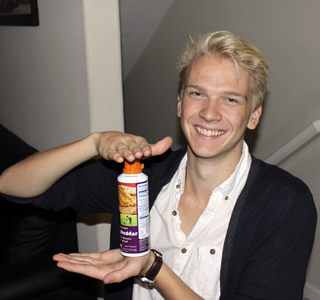Upon seeing Americans and their disgusted reactions as they try a brand of creamed smoked fish roe called “Kalles Kaviar,” a Swedish delicacy, I decided to try something American that I deemed equally disgusting: spray cheese.
A few weeks ago, an Uber driver making conversation about Sweden asked me if I liked “fish in tube.” It took me a moment to understand that she meant “Kalles Kaviar,” something I have been spreading on my sandwiches for as long as I can remember.
Once I understood what she was referring to, we had a good laugh over her declared disgust for the Swedish delicacy and how I make regular trips to IKEA to restock my fridge with the “fish in tube.”
As soon as I landed in the United States, I was bombarded with culture shock, particularly when it comes to food. My Swedish taste buds may be used to Burger King and Coca-Cola, but spray cheese? Finding that in a Swedish supermarket would be like excavating a new species of dinosaur.
As a European, I tend to associate deep-fried bacon donuts, funnel cakes or spray cheese with American foods. And, where just the thought of them makes me want to get on a treadmill.
The first taste of this American culinary experience was last year at Six Flags Magic Mountain, where I ordered a funnel cake topped with s’mores. Upon finishing a quarter of it, I felt so sick that I had to throw it away and wait for an hour before getting on the rides again to avoid throwing up while hanging upside down in a rollercoaster.
It was there my preconceptions of American food started.
Much like myself trying a s’mores-topped Funnel Cake or spray cheese, I realized that the few Americans who try “Kalles Kaviar” would probably exclaim “that is disgusting” or “oh my god,” and try to find the closest trash bin to spit it out.
Nevertheless, it was not before seeing the Swedish commercial for “Kalles Kaviar” mockingly advertising its product in Venice Beach, branding it “A very Swedish flavor,” that I set out on my quest.
The Americans in the commercial say things like: “this is not food, what is this?” and “you don’t want to serve that to people, dude,” proving that the delicacy is typically Swedish and very foreign to a non-Swede.
I remember reassuring myself I would try spray cheese at some point in my life after watching the guilty pleasure film “17 Again,” in which there is a scene in which Zac Efron’s character sprays it directly into his mouth.
Comparing two culinary extremes from different cultures and writing about it finally gave me a valid excuse to try spray cheese.
“Perfect,” I thought. “Spray cheese is as disgusting to me as Kalles Kaviar is for Americans.”
After buying a can of “Kroger sharp cheddar, pasteurized process cheese spread,” I got on my knees, mimicking Efron, and sprayed myself a mouthful.
I laughed about the absurd scene I made in our living room, trying to look like the movie poster of “The Platoon.” At first, it was not that bad, but as the cheese made its way to the back of my tongue, my gag reflex acted up.
It was like tasting conserved sweat, which according to one of my Swedish roommates, Emil Rasmussen, is how cheese tastes, in the form of too-thick pancake batter.
Once my mouth was full, I tried to swallow it but had to spit it out.
My verdict: “super disgusting.”
Since a mouthful of anything is disgusting, I had to try the following day. This time I sprayed no more than about an inch, hoping that my moderation would make it better. However, as I presumed, the overwhelming salty taste reminded me that whipped cream is the only food that should be sold in spray form.
Much like Americans trying “Kalles Kaviar” at Venice Beach, I decided, on the floor of my living room, that spray cheese was not for me. My cheesy adventure was over.
There is a Swedish saying that translates into: “Take the customs (of the place) where you come.” However, I will keep eating my caviar sandwiches under the California sun.


